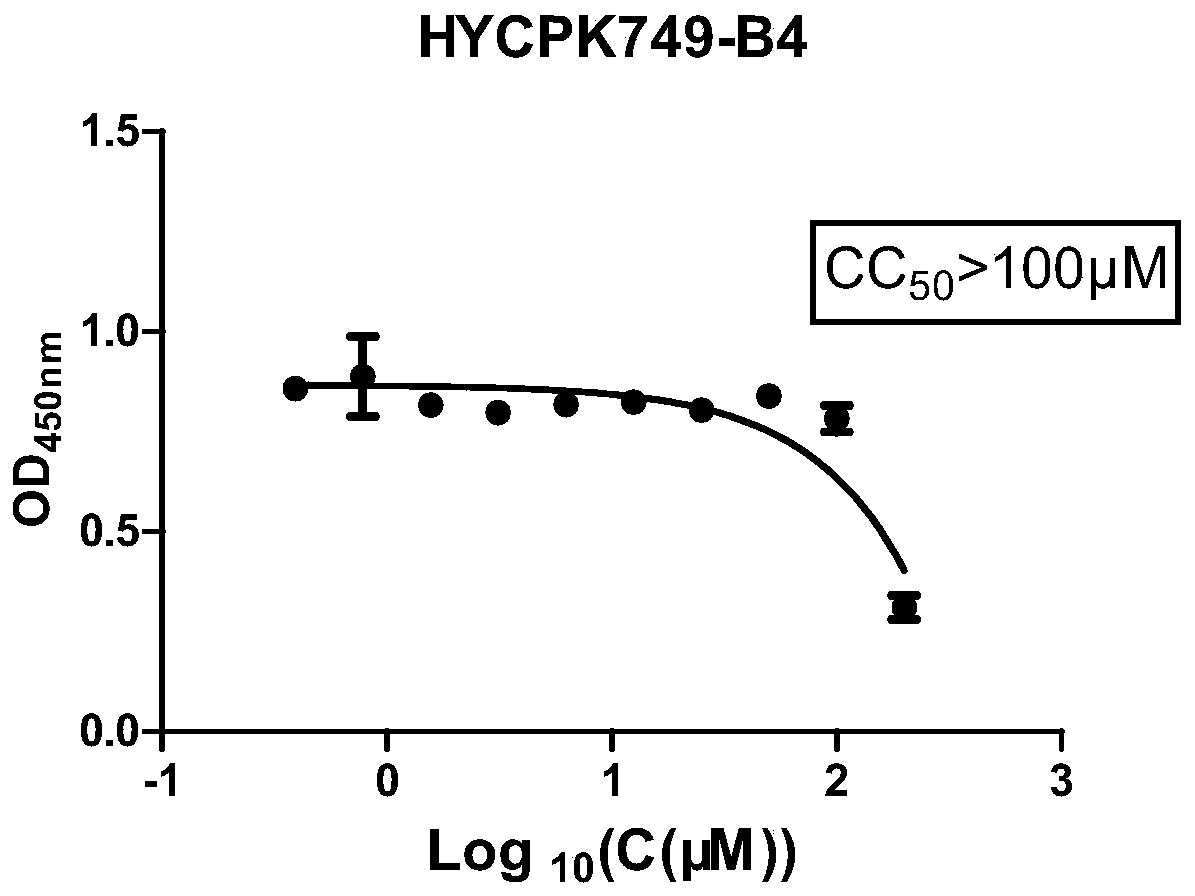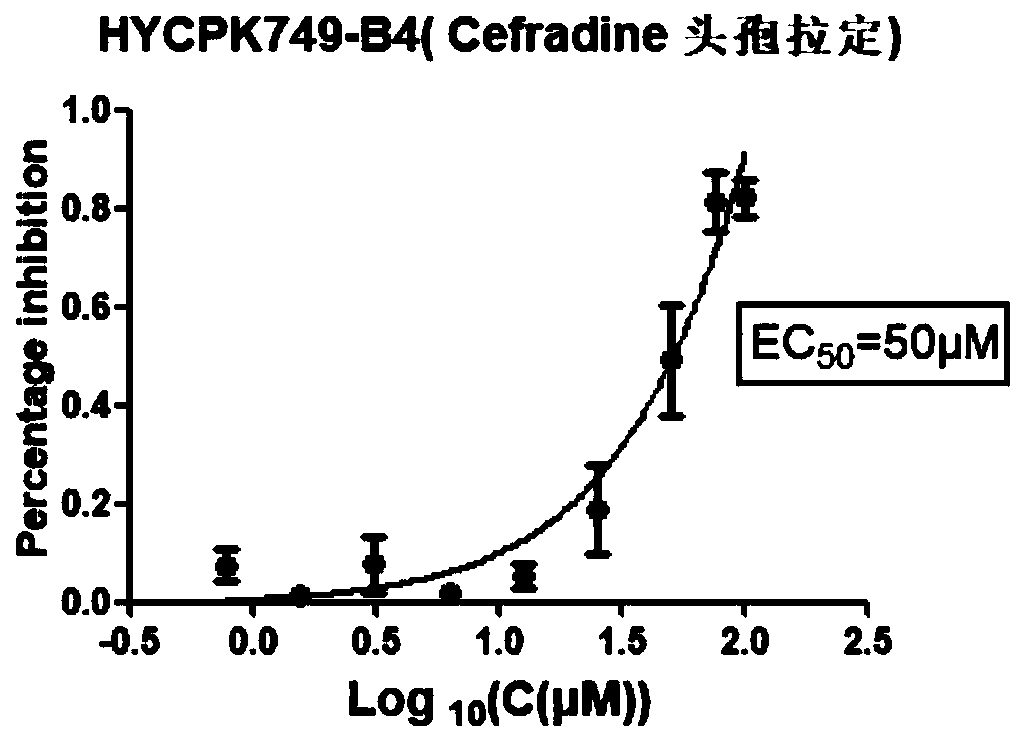Application of cefradine as bovine enterovirus inhibitor
An enterovirus, cefradine technology, applied in antiviral agents, medical preparations containing active ingredients, organic active ingredients, etc., can solve problems such as decreased milk production, economic losses in the cattle industry, and even blood in the stool.
- Summary
- Abstract
- Description
- Claims
- Application Information
AI Technical Summary
Problems solved by technology
Method used
Image
Examples
Embodiment 1
[0032] Example 1 Separation and identification of BEV
[0033] Dilute fresh cow feces with PBS, freeze-thaw repeatedly for 3 times, centrifuge at 5,000 r / min for 5 min, take the supernatant and add penicillin (200IU / mL) and streptomycin (100μg / mL), take 200μL of the supernatant, follow Viral genomic DNA / RNA extraction kit instructions to extract BEV viral genomic RNA, reverse transcription into cDNA, PCR amplification with BEV specific primers, the stool supernatant identified as positive by PCR is filtered and sterilized with a 0.22um filter membrane , Take 1ml of inoculated MDBK monolayer cells, adsorb them at 37°C for 1h, discard them, and add them to DMEM medium containing 2% FBS. 2 Cultivate in a cell incubator, observe the cytopathic condition every 12h, and observe continuously for 4 days. Freeze and thaw the cells with lesions (CPE) three times, collect the cell virus solution, and identify whether the obtained cell virus is a BEV single infection. If it is not a single v...
Embodiment 2
[0035] Example 2 Virus TCID 50 Determination of
[0036] Digest the MDBK cells to 3×10 per well 5 Cell density of cells / mL was inoculated into 96-well cell culture plate, placed in 37℃, 5% CO 2 After culturing into a monolayer of cells in a cell incubator, discard the cell growth medium in the well, and dilute the bovine enterovirus with a 10-fold serial dilution of the virus (the dilution is 10 -1 -10 -10 ) Inoculated in a 96-well plate full of monolayer cells, 100μL per well, placed in 37℃, 5% CO 2 Continue to cultivate in the incubator, observe the CPE of the cells daily, and record the number of cytopathic wells in detail. At the same time, a normal cell control group and a blank control group were set up, with 8 replicates in each group, and the results were determined when the cytopathic changes no longer occurred. The cytopathic hole is the corresponding cell hole of the above cells, and the virus TCID is calculated according to Karber method 50 .
[0037] Table 1 TCID 50 o...
Embodiment 3
[0045] Example 3 Toxicity experiment of cefradine on MDBK cells:
[0046] MDBK cells are susceptible cells to bovine enterovirus. Therefore, firstly, the cytotoxicity of cefradine on MDBK cells was tested, and the specific experimental procedures were as follows:
[0047] (1) Inoculate 100μL cells (MDBK 3×10 4 Pcs / hole).
[0048] (2) After culturing for about 12 hours, proceed to the next step of drug addition analysis. The culture medium was discarded, and 100 μL of 2% FBS DMEM containing different drug concentrations was added to each well, and three parallels were made for each concentration. At the same time control wells: add 100μL of 2% FBS DMEM medium. Zero adjustment hole: do not plate cells.
[0049] (3) At 37℃, 5% CO 2 After culturing for 48 hours under the conditions, operate according to the CCK-8 kit instructions, and measure the OD value at 490nm with a microplate reader.
[0050] (4) 37℃, 5% CO 2 After continuing to culture for 4 hours under the conditions, the absorb...
PUM
 Login to View More
Login to View More Abstract
Description
Claims
Application Information
 Login to View More
Login to View More - R&D
- Intellectual Property
- Life Sciences
- Materials
- Tech Scout
- Unparalleled Data Quality
- Higher Quality Content
- 60% Fewer Hallucinations
Browse by: Latest US Patents, China's latest patents, Technical Efficacy Thesaurus, Application Domain, Technology Topic, Popular Technical Reports.
© 2025 PatSnap. All rights reserved.Legal|Privacy policy|Modern Slavery Act Transparency Statement|Sitemap|About US| Contact US: help@patsnap.com



